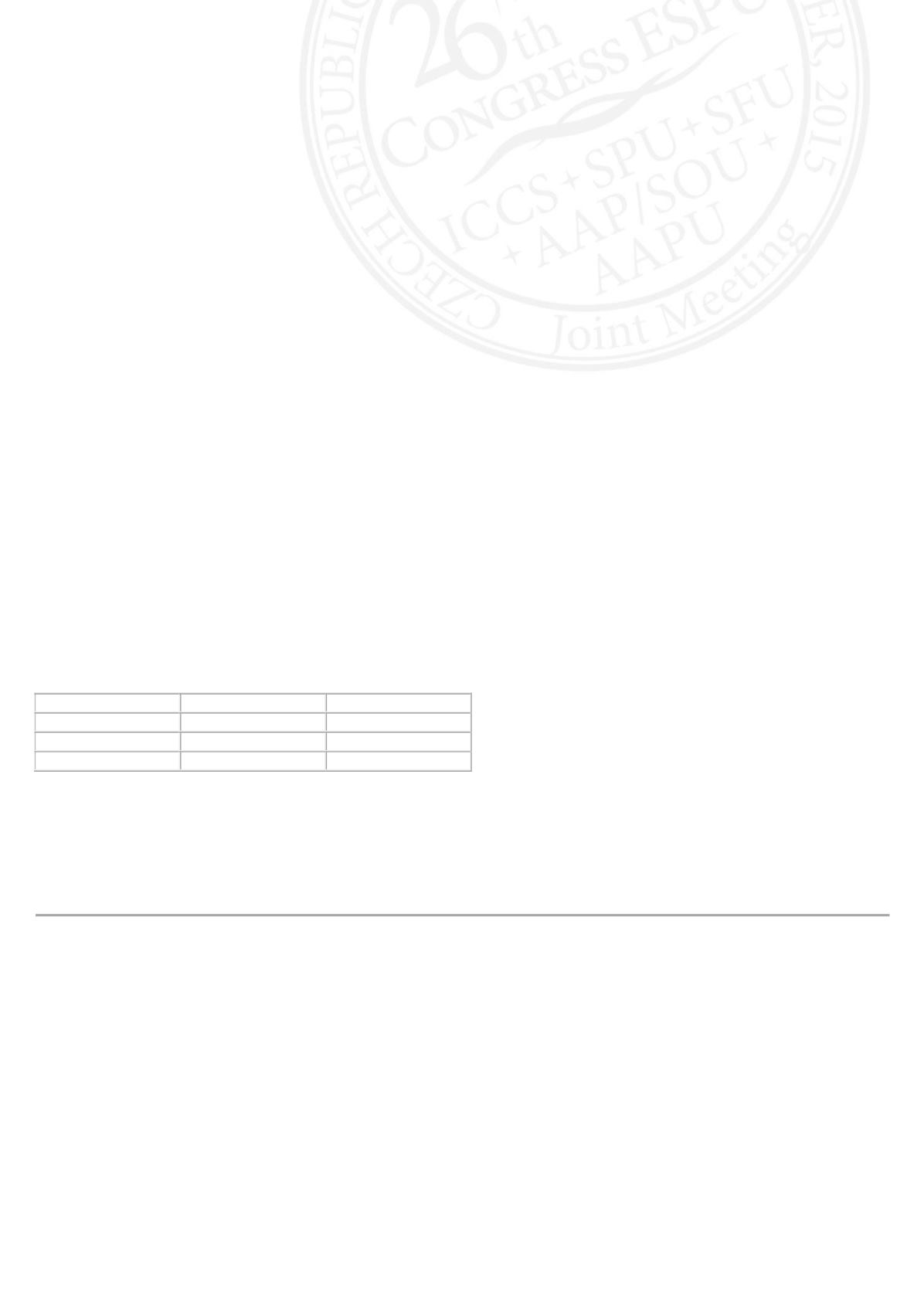

S4-15
(P)
CAN WE PREDICT THE RISK OF URETERAL REIMPLANTATION IN PATIENTS WITH
DIAGNOSIS OF VESICOURETERAL REFLUX?
Pankaj DANGLE, Audry KANG , Omar AYYASH, Heidi STEPHANY, Glenn CANNON JR., Francis SCHNECK and Michael OST
The Children's Hospital of Pittsburgh, Pediatric Urology, Pittsburgh, USA
PURPOSE
Factors deciding surgical decision making for vesicoureteral reflux (VUR) are significantly variable and are based on
individual preferences and practice patterns. With the current shift towards conservative management, it is crucial to
base the surgical decision based on individualized risk factors. Our goal was to assess the individual patient related risk
factors, in patients undergoing corrective VUR surgery.
MATERIAL AND METHODS
After IRB approval, a retrospective review of all patients presenting with VUR was performed. Possible independent
predictors evaluated included age, gender, number of febrile UTIs, prenatal diagnosis, bilateral VUR, fever>39.8,
constipation, voiding dysfunction, and radiographic features on VCUG [Dilating (≥ 7mm distal ureter), reflux on filling,
and persistence on post void phase]. Multivariate logistic regression was performed to identify factors that predicted
surgical intervention.
RESULTS
Of the 486 eligible patients (average age-25.2 months), 118 (24.3%) had reflux that either remained stable or resolved
while 75.7% required corrective surgery.
Based on multivariate analysis, age, gender, number of febrile UTIs, high grade VUR (<0.001), prenatal diagnosis
(0.003), voiding dysfunction (0.026), and dilation of ureter on VCUG (<0.001) were significant predictors of surgical
intervention.
Female gender (OR 12.2), dilation on VCUG (OR 8.1) and grade 4,5 VUR (OR 5.9) were the strongest predictors. The
logisitic model and prediction equation had good discrimination (c-statistic = 0.87) and very high calibration (p ≥
0.58).
Max VUR
Odds of Surgery
P-value
Grade 1 & 2
N/A
0.017
Grade 3
0.14
<0.001
Grade 4 & 5
5.99
<0.001
CONCLUSIONS
Female gender, high grade VUR, age (post toilet training), number of febrile UTI, prenatal diagnosis, voiding dysfunction
and dilatation of distal ureter are strong preoperative predictive risk factors for corrective surgery for VUR with negative
predictive value of 74%.












